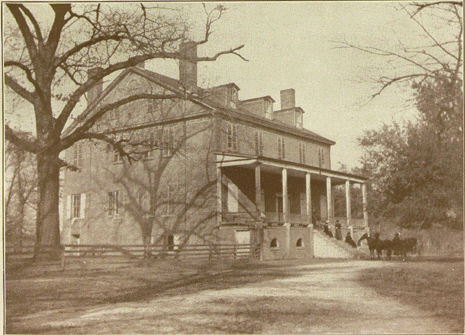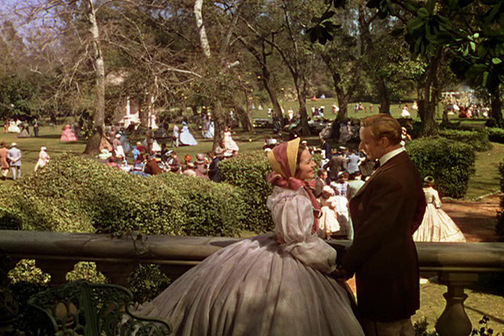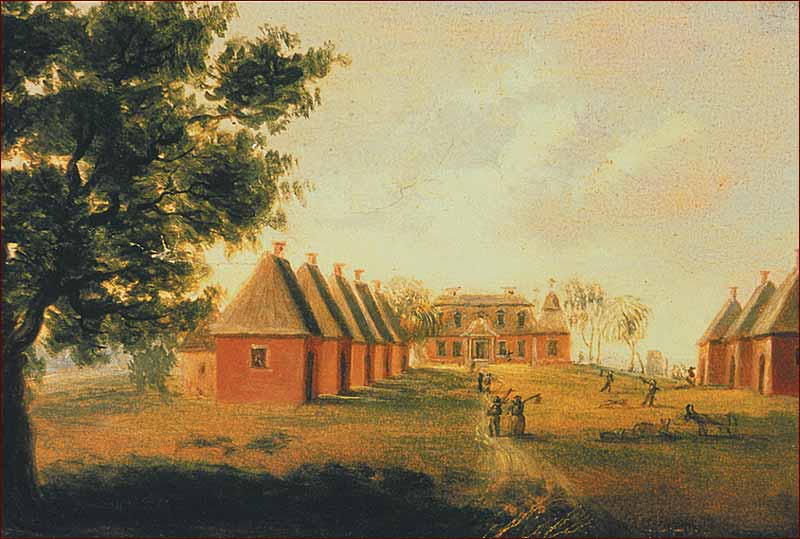Coram’s View Of Mulberry in 1800 looks up to the rear of the house from the vantage point of “the street” because it was lined with slave quarters, of which houses are visible. Coram’s view suggests “the street” was a matter of pride and an indication of wealth and prestige. Refinements to Mulberry altered the landscape but not the institution of slavery. In April 1861, the street was replaced by a lawn greatly admired by Mary Boykin Chesnut, who was happy to escape the fighting in Charleston and the bombardment of Fort Sumter. Chesnut’s Diary from Dixie entry says that she sat “idly to-day looking out upon this beautiful lawn, wondering if this could be the same world I was in a few days ago. After the smoke and the din of the battle, a calm.”
On a brilliant November day, Chesnut hosted a “charming picnic” on the lawn two years later. Chesnut is effusive: “Everything was propitious,” she recalls, “the most perfect of days and the old place in great beauty. Those large rooms were delightful for dancing; we had as good a dinner as mortal appetite could crave; the best fish, fowl, and game; wine from a cellar that can not be excelled.” Staff was at hand for preparations, serving, and menial tasks. Chesnut calls them “servants,” sometimes Negros, but never slaves.

Mulberry Plantation looks somber in the winter or early spring of 1865. During the war, Chesnut, living in Columbia, South Carolina, returned after the Confederate Army surrendered to General Grant at Appomattox Courthouse on April 9, 1864.
Margaret Mitchell was likely inspired by Chesnut’s “charming picnic” at Mulberry. Gone With the Wind opens with a grand picnic meant to capture to elegance and taste of the antebellum South in April 1861. Contrary to Chesnut’s blind eye towards slavery, Mitchell makes a few significant changes by offering two picnics side-by-side, one for the Wilkes and friends and the other for the “servants,” a euphemism for enslaved African Americans. There would be turkeys, chickens, and buffalo tongues; at the Wilkes’, there is Brunswick stew served on great tables under the trees, barbecue, chitterlings, and such served behind the barns and sheds. Though the Wilkes, O’Haras, Hamiltons, and their cohorts choose to ignore it, the aroma of barbecue inescapably permeates the grounds.

Victor Fleming. Gone With the Wind (1939). The screenplay by Sidney Howard is based on Margaret Mitchell’s novel (1936). Selznick International Picture. Metro-Goldwyn-Mayer. Ashley Wilkes (Leslie Howard) and Melanie Hamilton (Olivia de Havilland) on the veranda overlooking the lawn and gardens at Twelve Oaks Plantation.
Feature Image: Thomas Coram. View of Mulberry, House, and Street (1800c.). Oil on canvas. Charleston, South Carolina. Gibbes Museum of Art. The rear of the house faces the “street,” lined with enslaved African Americans’ houses.
See Mary Boykin Chesnut. A Diary from Dixie, as Written by Mary Boykin Chesnut, Wife of James Chesnut, Jr., United States Senator From South Carolina, 1859-1861, and Afterward an Aide to Jefferson Davis and a Brigadier-General in the Confederate Army. Edited by Isabella D. Martin and Myrta Lockett Avary. New York: D. Appleton and Company, 1905; Margaret Mitchell. Gone With the Wind. Macmillan. New York: Macmillan Company, 1936, http://docsouth.unc.edu/southlit/chesnut/maryches.htmlText; Margaret Mitchell Gone With the Wind. New York: Macmillan Company, 1936.
*Boykin was well-connected and among the Confederate elite. Her husband, James Chesnut, Jr., left the United States Senate in 1860 to serve under General P.T. Beauregard and then aide de camp to Jefferson Davis, president of the Confederate States of America (1862-1864).

